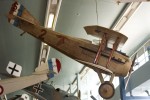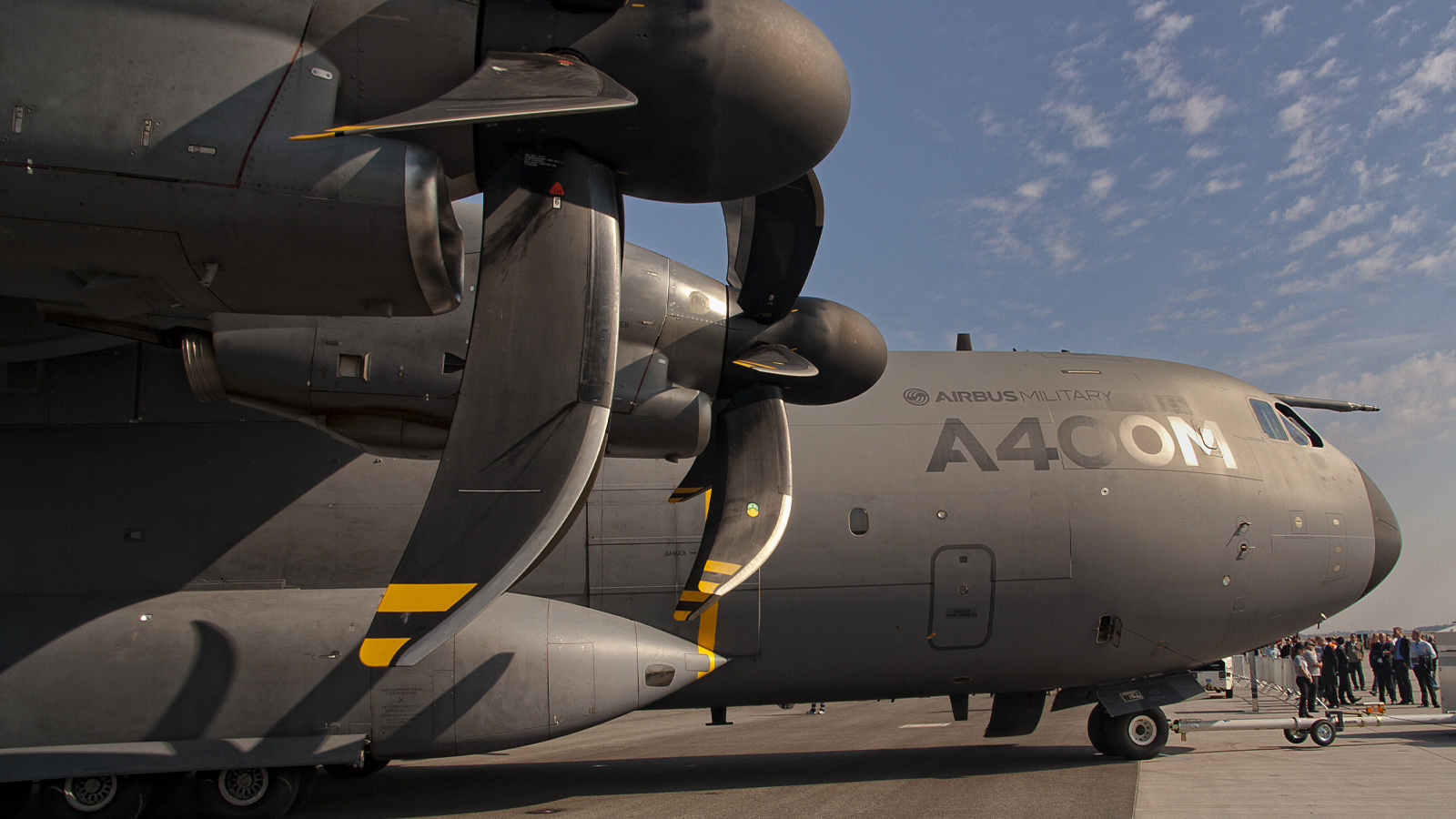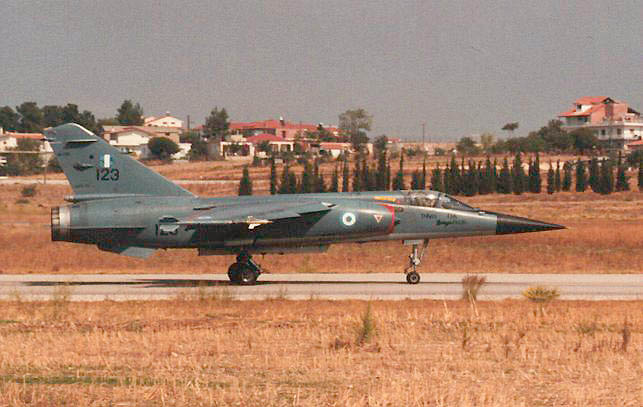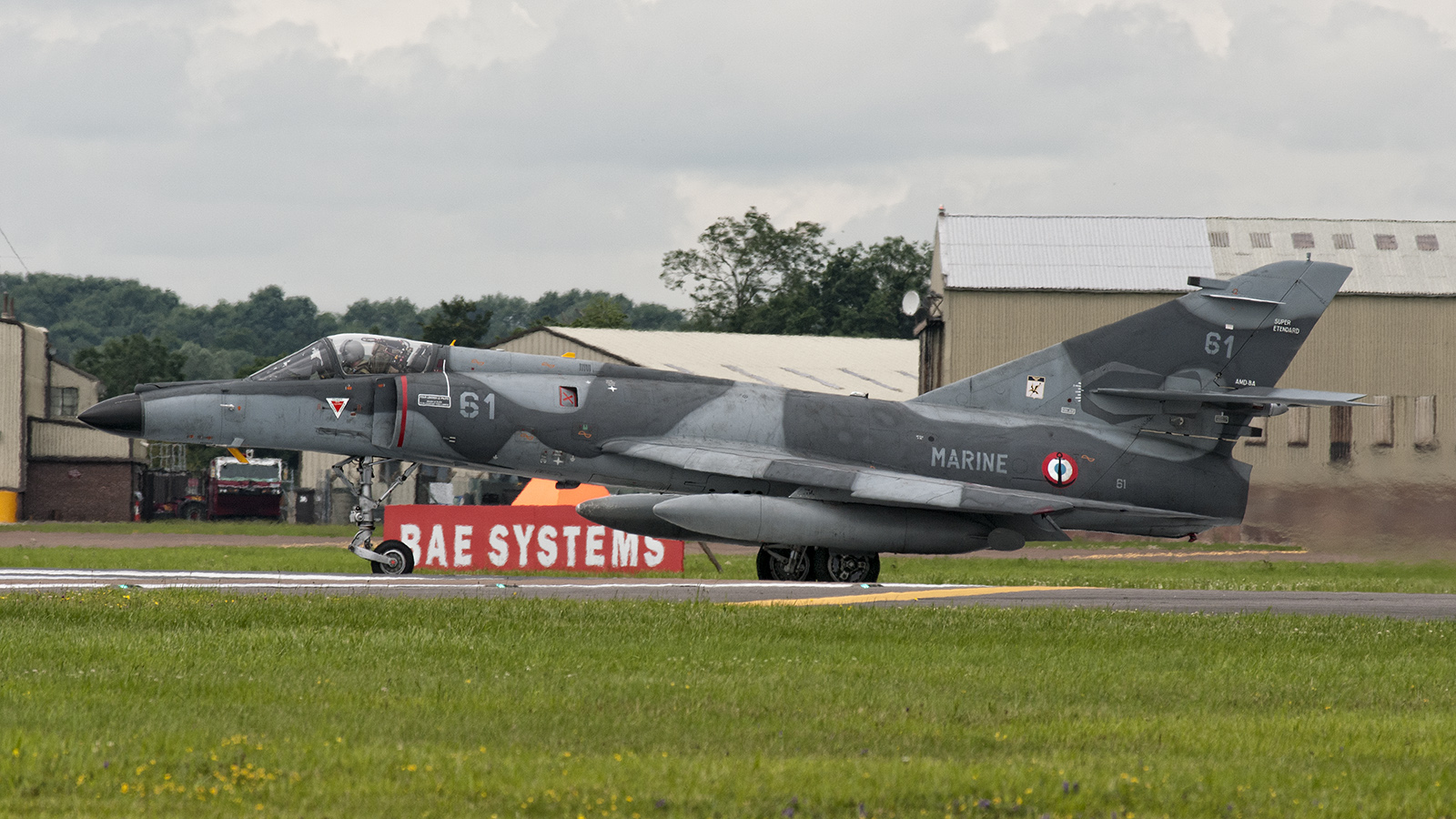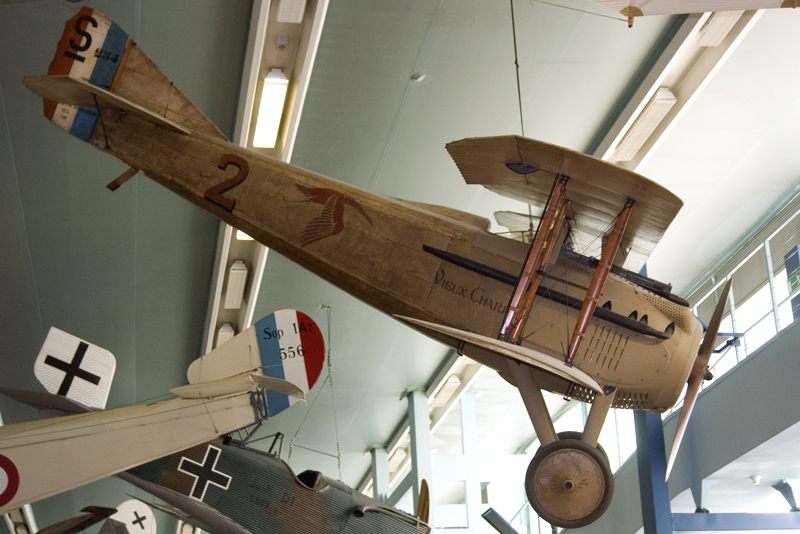
The SPAD S.VII was the first of a series of highly successful biplane fighter aircraft produced by Société Pour L’Aviation et ses Dérivés (SPAD) during the First World War.
Developing nation: France.
Manufacturer/designer: SPAD (Société Pour L’Aviation et ses Dérivés).
Production Lines: Laon.
Type aircraft: biplane fighter aircraft.
First flight: May 1916.
Number built: 3720.
In 1913 Blériot acquired the assets of the Deperdussin company, following the arrest on fraud charges of its founder Armand Deperdussin. The name of the company was changed from Société de Production
Aéroplanes Deperdussin to Société Pour L’Aviation et ses Dérivés, generally referred to by its acronym SPAD. This company became extremely successful during World War I, and a British factory was established in Addlestone.
Béchereau’s first real success was the SPAD S.VII, which superficially resembled a smaller, neater A.2, without the forward gunner’s nacelle. Developed from the SPAD V, of which 268 were ordered but none certainly built as SPAD Vs, the SPAD S.VII was a single-seat tractor biplane fighter of simple and robust design powered by the new Hispano-Suiza water-cooled V-8 engine. Compared to earlier fighters, when the SPAD VII appeared in 1916 it seemed a heavy and unmanoeuvrable aircraft, but pilots soon learned to take advantage of its speed and strength. Some 3,500 SPAD S.VIIs were built in France, 120 in Britain, and 100 in Russia during the First World War, although many more had been ordered from a new factory in Yaroslavl, which was not completed until after the Russian Civil War.
the SPAD S.VII, production commenced in the summer of the 1916, with the first units reaching the front in August. Despite, the Aéronautique Militaire’s enthusiasm for the aircraft several problems quickly emerged in the field. Among these was a tendency for the engine to overheat in warm weather and for the ammunition feed system to jam. Addressing these issues in late 1916, the SPAD S.VII finally began reaching the front in large numbers in early 1917. The aircraft’s performance was further improved that spring with the introduction of the 180-hp Hispano-Suiza 8Ab engine.
At the front, the fighter quickly proved itself when Armand Pinsard scored the first kill for the SPAD on August 26, 1916. While some pilots were discouraged by the plane’s initial reliability issues, others, such as ace René Fonck, worked to develop new tactics based on the SPAD’s speed and power. Flying over the Western Front, the SPAD S.VII proved more than a match for most the German fighters it encountered and demonstrated an ability to take an amazing amount of punishment. As a result, most French squadrons had their Nieuports replaced with SPADs.
After observing French success with the aircraft, several foreign air services, such as the Royal Flying Corps and the US Army Air Service, purchased and operated the SPAD S.VII as well. In April 1917, the new SPAD S.XIII flew for the first time. A heavier, better-armed version of the SPAD S.VII, the new fighter possessed a 220-hp Hispano-Suiza engine and was capable of 135 mph. First introduced in May 1917, the S.XIII gradually replaced the S.VII in frontline units. Still a capable aircraft, the SPAD S.VII was utilized in secondary and training roles for the remainder of the war.
Survivors
- SPAD VII (s/n 103) (B9913) is on display at the Virginia Aviation Museum. It was one of 19 British made SPADS built in 1917 by Mann Egerton & Co. Ltd.. It was fully restored in 1973.
- SPAD VII (s/n AS 94099) is on display at the National Museum of the United States Air Force in Dayton, Ohio.
- SPAD VII (S.254) is on display at the Musée de l’Air et de l’Espace near Paris, France, once flown by Georges Guynemer in World War I.
- SPAD VII.c.1 (B9916) is on display at the San Diego Air & Space Museum. Built at the Mann, Edgerton and Co. of Norwich, England in 1917, it was one of a batch shipped to the United States for use as a trainer. The aircraft is fully restored in 1990 and is 95% original.
- SPAD VII is on display at the Letecke Muzeum at Kbely, a northeastern suburb of Prague, Czech Republic, flown post-World War I in Czechoslovak Air Force, in the Západo?eský aeroklub (West-Bohemian Aero Club).
- Two SPAD VII are on display at the Italian Air Force Museum at Vigna di Valle: S.153once flown by Fulco Ruffo di Calabria and the one flown by Ernesto Cabruna in World War I.
Operators
- Argentina (Two aircraft)
- Belgium – Belgian Air Force
- Brazil – Brazilian Air Force (15 aircraft)
- Chile – Chilean Air Force (One aircraft)
- Czechoslovakia (70–80 aircraft)
- Estonia – Estonian Air Force – Postwar, (Two aircraft)
- Finland – Finnish Air Force – Postwar, (One aircraft)
- France
- Greece – Hellenic Air Force
- Italy – (214 aircraft) Regia Aeronautica – Postwar
- Japan
- Netherlands (One aircraft)
- Peru (Two aircraft)
- Poland – Polish Air Force – (Post-war)
- Portugal – Portuguese Air Force
- Romania – Royal Romanian Air Force
- Russian Empire – Imperial Russian Air Service – (43 aircraft)
- Serbia
- Soviet Union – Soviet Air Force – Postwar.
- Siam (Thailand) – Royal Thai Air Force
- Ukraine (two aircraft)
- United Kingdom (185 aircraft) – Royal Air Force
- Royal Flying Corps
- No. 17 Squadron RFC
- No. 19 Squadron RFC
- No. 23 Squadron RFC
- No. 30 Squadron RFC
- No. 63 Squadron RFC
- No. 72 Squadron RFC
- No. 92 Squadron RFC
- United States – American Expeditionary Force – United States Army Air Service (189 aircraft)
- Yugoslavia – Yugoslav Royal Air Force – Postwar
General characteristics
- Crew: One
- Length: 6.08 m (19 ft 11 in)
- Wingspan: 7.81 m (25 ft 8 in)
- Height: 2.20 m (7 ft 2 in)
- Wing area: 17.85 m² (192 ft²)
- Empty weight: 510 kg (1,124 lb)
- Max. takeoff weight: 740 kg (1,632 lb)
- Powerplant: 1 × Hispano-Suiza 8Aa inline engine, 112 kW (150 hp)
Performance
- Maximum speed: 192 km/h (119 mph)
- Range: 360 km (225 mi)
- Service ceiling: 5,335 m (17,500 ft)
- Time to altitude: 4.5 min to 2,000 m (6,560 ft)
Armament
- 1 x .303-cal. Vickers machine gun
All pictures courtesy of Zijde Aviation Photo and Publishing, Rob Vogelaar / Marcel van Leeuwen

